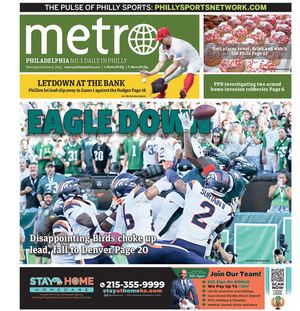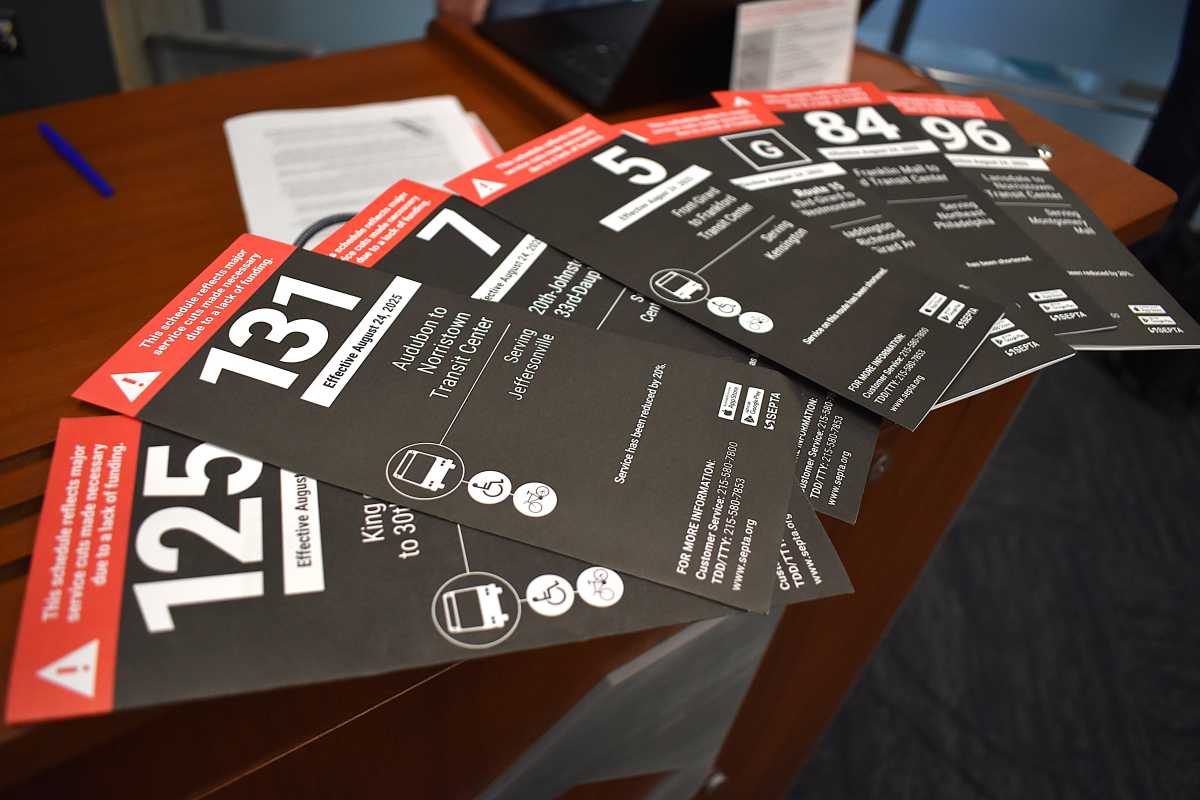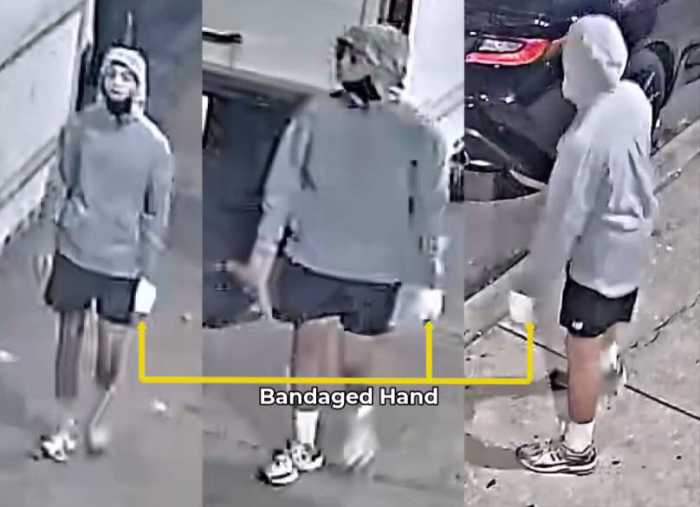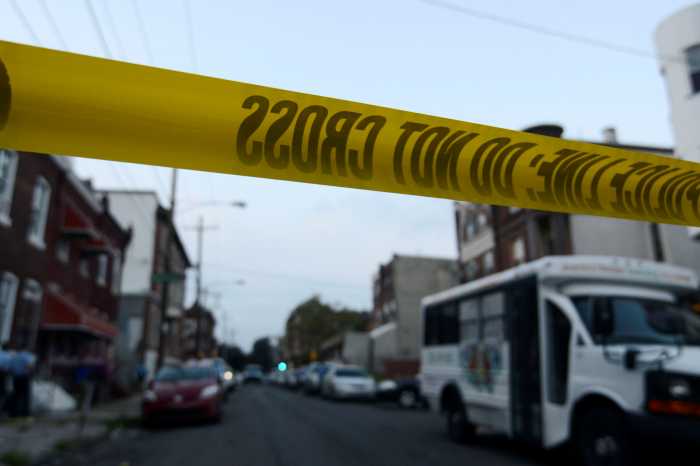Dozens of SEPTA bus routes were eliminated Sunday, as the authority began implementing its first round of planned service reductions to account for a $213 million budget deficit.
The cuts came after years of warnings about SEPTA’s ‘fiscal cliff,’ a funding crisis exacerbated by the coronavirus, the expiration of federal pandemic relief dollars and rising costs.
Gov. Josh Shapiro and state legislative leaders have been unable to reach an agreement to provide additional funding for mass transit in Pennsylvania.
“We never wanted to be in this situation,” SEPTA General Manager Scott Sauer said at a news conference Friday. “Taking away service is at odds with everything that we strive to do at SEPTA.
“Our hope is that the coming days will see progress in Harrisburg toward a long-term, sustainable funding solution for public transportation, so that this disruption for our customers, our city and region will be as brief as possible.”
Ambassadors will be stationed at transit hubs this week across the city to answer questions and help riders get where they need to go, Sauer said.

More than 50,000 middle and high school students in Philadelphia use SEPTA to get to class, and the School District of Philadelphia’s first day back is Monday.
Sauer warned of anticipated crowding this week, and the potential for bus and train operators to bypass stops if their vehicles are full. SEPTA’s remaining service is expected to run at a slower pace.
“One thing we cannot stress enough, all riders should allow for extra time as they get used to the changes next week,” he told reporters.
What’s being cut
The following bus routes have been discontinued: 1, 8, 12, 19, 30, 31, 35, 47M, 50, 62, 73, 78, 80, 88, 89, 91, 106, 120, 126, 133, 150, 201, 206, 311, 452, 461, 462, 476, 478, 484, Boulevard Direct and Mann Loop. Another route, the 204, is slated to stop running Sept. 27.
Sixteen bus lines are being shortened: 2, 3, 5, 7, 9, 17, 27, 43, 61, 84, 115, 124, 125, 433, 441 and 495.
Curtailed schedules, reflecting 20% reductions, went into effect Sunday on most bus, trolley and subway lines. Timetables for a smaller selection of routes, primarily in the suburbs, are set to be implemented Monday. Go to septa.org to access schedules by route number.
Special event service to the South Philadelphia Sports Complex on the Broad Street Line ended Sunday, as the Phillies head toward the end of their season and the Eagles kick off Sept. 4.
Sauer said stadium riders “could see abnormally long wait times,” with far fewer trains running at some points of the day. The Phillies, in a statement Saturday evening, advised fans to “plan ahead, arrive early and allow for additional travel time to and from Citizens Bank Park.”
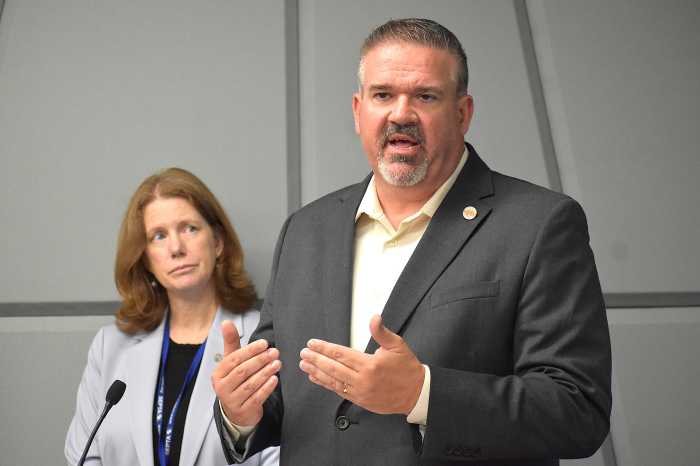
On Monday, Sept. 1, SEPTA plans to roll out a 21.5% fare increase, raising the base price from $2.50 to $2.90. Less frequent Regional Rail service will take effect the following day, with new schedules.
Authority leaders have said they would need 10 days to reverse the cuts, if a funding package is approved in Harrisburg.
On the other hand, in the event that no additional state dollars arrive, SEPTA intends to proceed with a second round of reductions in January, including the elimination of five Regional Rail Lines, 18 more bus routes and a 9 p.m. subway, trolley and rail curfew. All told, the authority’s doomsday budget slashes 45% of the service that was available as recently as last week.
Possible solutions
The Chamber of Commerce for Greater Philadelphia, an influential business coalition, recommended Sunday that Democrats and Republicans agree to a “temporary solution” to the transit issue while committing to engaging in further negotiations.
In a statement, the organization proposed pulling money from the state’s Public Transportation Trust Fund to cover operating costs. The fund could afford to lose $300 million annually over the next two years and still have more than enough to pay for capital projects, which it was designed to do, according to a chamber analysis.
“The citizens in our region, including employees attempting to get to work and children trying to get to school, should not be impacted by service cuts when there are dollars available to keep the system operating while a longer-term solution is reached,” the business group said.
The approach shares elements with a plan passed earlier this month in the GOP-controlled Pennsylvania Senate; although that legislation also took money from the PTTF for road and bridge construction and incorporates some revenue from taxes on gambling.
It was voted down in the House of Representatives, where Democrats hold a majority. Leaders in that chamber have favored measures allocating a greater percentage of sales tax proceeds to transit.
SEPTA officials have been hesitant to embrace a plan utilizing the PTTF dollars, which typically fund longer term efforts, such as bridge rehabilitations and new vehicle purchases. The authority has a $10 billion repair backlog; recently, 50-year-old trains cars have had to be pulled off the tracks, causing Regional Rail disruptions.
“Taking from one pot to give to the other is not a sustainable solution,” Sauer said Friday. “It could be a quick fix, I suppose, but that’s for them to decide.”

As talks continue, the blame game has ramped up.
Transit advocates, union leaders and Democratic elected officials continue to target Republican senators from southeastern Pennsylvania. This week, they are planning to protest at Sen. Tracy Pennycuick’s office in North Wales.
In a news release issued Friday, the Commonwealth Foundation, a conservative think tank, characterized SEPTA’s cuts as a “manufactured crisis, fueled and exploited by Gov. Josh Shapiro and Pennsylvania House Democrats as leverage in a protracted budget impasse of their own making.”
The organization paid to have a TV advertisement blasting Shapiro appear this week in the Philadelphia, Pittsburgh and Harrisburg markets.
Shapiro, in a post on X, formerly Twitter, on Sunday, reiterated his commitment to public transit, noting that he has previously flexed federal highway dollars to SEPTA and incorporated funding into multiple proposed state budgets.
“Like you, I’m extremely frustrated it’s not done yet,” he wrote. “But it’s also why I’ll stay at the negotiating table, working to bring Democrats and Republicans in our divided Legislature together, until we get the job done.”
